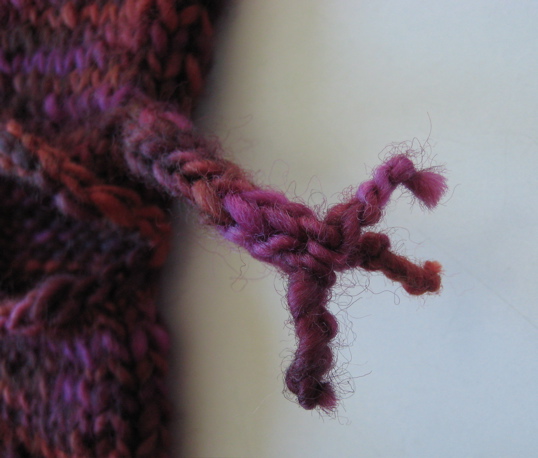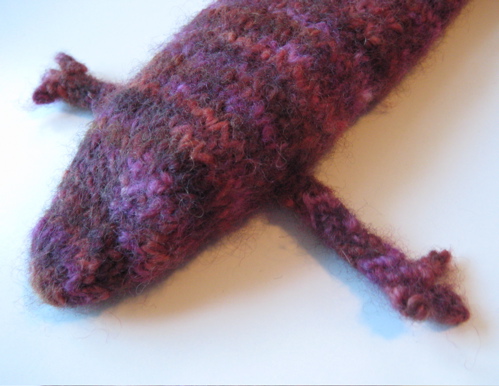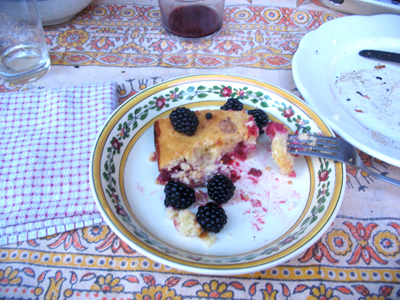A while back I had the pleasure of interviewing Anne and Kerrie, the two masterminds behind the UK Based Junky Styling. Junky has been turning out amazing clothes that have been recycled, reused, rethought as well as combining industrial jobber/remnant fabrics that would have just been thrown out into their line. (A jobber/remnant fabric is yardage that is used commercially for fashion but whose remnant, after production use, is too small to resell to a fabric store for public consumption.) From skiwear to evening wear these two women have designed it all. Innovative and challenging, their clothing evokes a sense of history without being lumped into "vintage". Couture and streetwear that truly redefine an idea of what a 21st century eco-conscious woman is and how she should dress.
 (L) Annie and (R) Kerrie. Two wonderful women with one of the
(L) Annie and (R) Kerrie. Two wonderful women with one of themost incredible labels I've seen in a while.
While in Paris for Pret a Porter I talked to them further about the eco-fashion business and their upcoming 10 year anniversary show at Dray Walk in the heart of London’s alternative design neighborhood.
Here is part one of a two part interview.
Many people think that in order to be considered an eco-fashion designer there is so much you have to learn before you can even begin to grasp the work. What inspired you to start Junky? Were you already interested in the environment when you started the company?
We began because we wanted to dress differently. Initially, it was all about unique design, and we were able to achieve this through cutting up clothes that were second hand. We started because there is nothing worse than being in the same place and same dress as someone else! We didn't study for it and it the environmental relevance was there, but the design was at the forefront.
You’ve received a lot of attention from the fashion press in Europe but how do you feel your impact has been received so far?
Nominally - We are just a small spec on the fair-trade horizon, but one nevertheless that Vogue's called 'high fashion street couture', so we're happy with that !

A lot of people are asking how to give back, how to really make this sort of movement hit home. How do you feel you can push yourself even further? What are you hoping to achieve with your message of reuse::recycle::refashion?
Acquiring franchises around the world where we can train up the local community's to create and recycle in the Junky way, this would leave a
great legacy
Something that is even more challenging in being green in this fashion world is being a woman. What has been your biggest challenge as businesswomen? As a start up? Doing eco-fashion?
When we started 10 years ago the biggest challenge was to get people to take us seriously and believe that our idea was a viable business option, as opposed to just a hobby! For us, perseverance and a belief that what we were doing got us through a lot of disbelievers. Meeting other women in business has enabled us to succeed in our right.
Of course I have to ask what would you have done differently if you had a chance?
I think I’d have liked to have some kind of training/experience before we began...Whether it be tailoring, business, accounting skills etc – I just think it would of made life easier !
What do you feel is the biggest issue that you hope you can tackle with your clothing?
The sheer disposability of fashion - let it be known that you CAN wear clothes for more than 1 month. The idea that when you are tired of something you can change it up and wear it again and again.
Do you feel that there is space for people to not do anything to stop the environmental harm that is going on in the world?
 We have all now acquired a heightened level of education/information about the environment. No matter who we are, or what life we lead. So there are no excuses at all left for us to not do what we can to make a difference. We believe that if everyone does something, no matter how little, a change will be made
We have all now acquired a heightened level of education/information about the environment. No matter who we are, or what life we lead. So there are no excuses at all left for us to not do what we can to make a difference. We believe that if everyone does something, no matter how little, a change will be madeIs there anything you can share with us about your design process?
There is nothing to tell ! We just create sustainable designs via our Junky's ethos - Timeless, deconstructed re-cut and completely transformed
clothing - forever
There is so much talk in the world today about trends and how “Green is the new black.” Which leads one to believe that Green and Eco will go the way of my Z Cavaruccis. Where do you think eco-fashion is going? How do you feel apart of that process/transit? Where do you want it to go if it isn't going in the direction you feel it should
It’s my belief that finally, eco-fashion is becoming more design lead. Which is .of course, the way forward. People can't be expected to purchase clothes solely on the basis that it's a green product; they have to feel and look good as after all, they are buying a style- a fashion. So this movement towards a more sophisticated cut etc is a very positive thing. This then backs up my theory that green fashion isn't just a fad - like organic food, you can't forget what you've learnt, so keep learning and moving the cause forward.
For me I know now that I’ve learned a lot of some of the small things I can do to make a difference how do you bring issues of greening into the rest of your lives?
We all here at Junky do as much as we can. From choosing and investing in green energy to recycling, we all try to live as sustainable of a lifestyle as we can.




